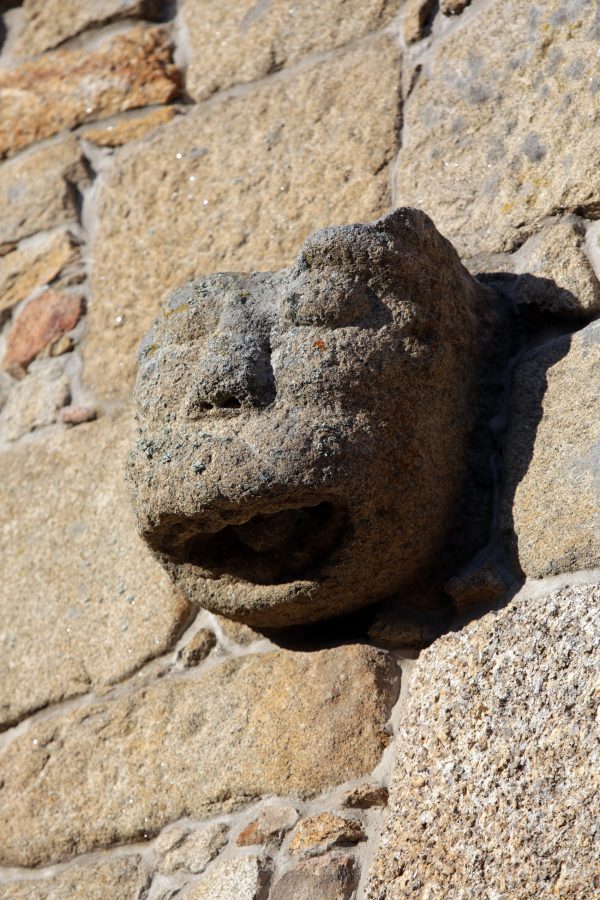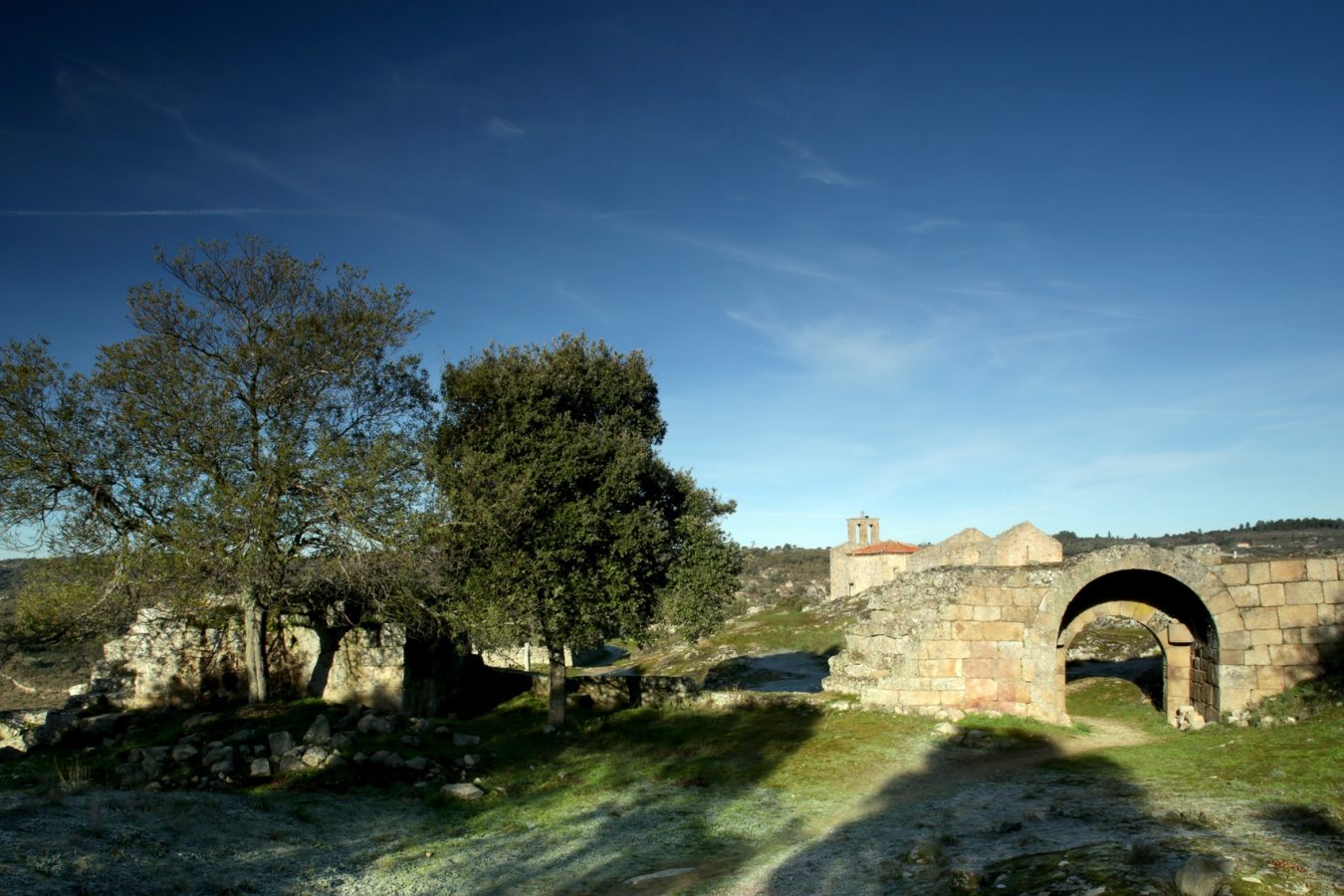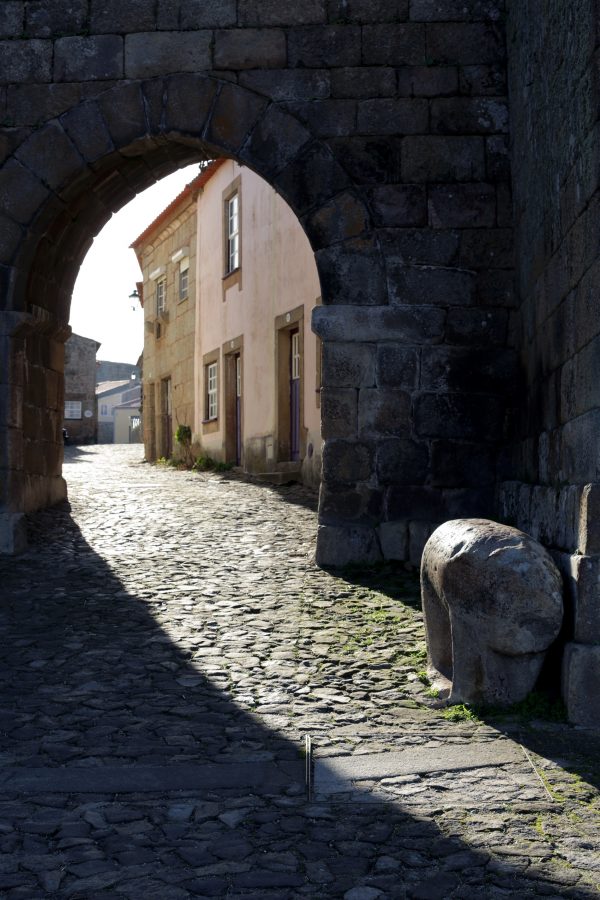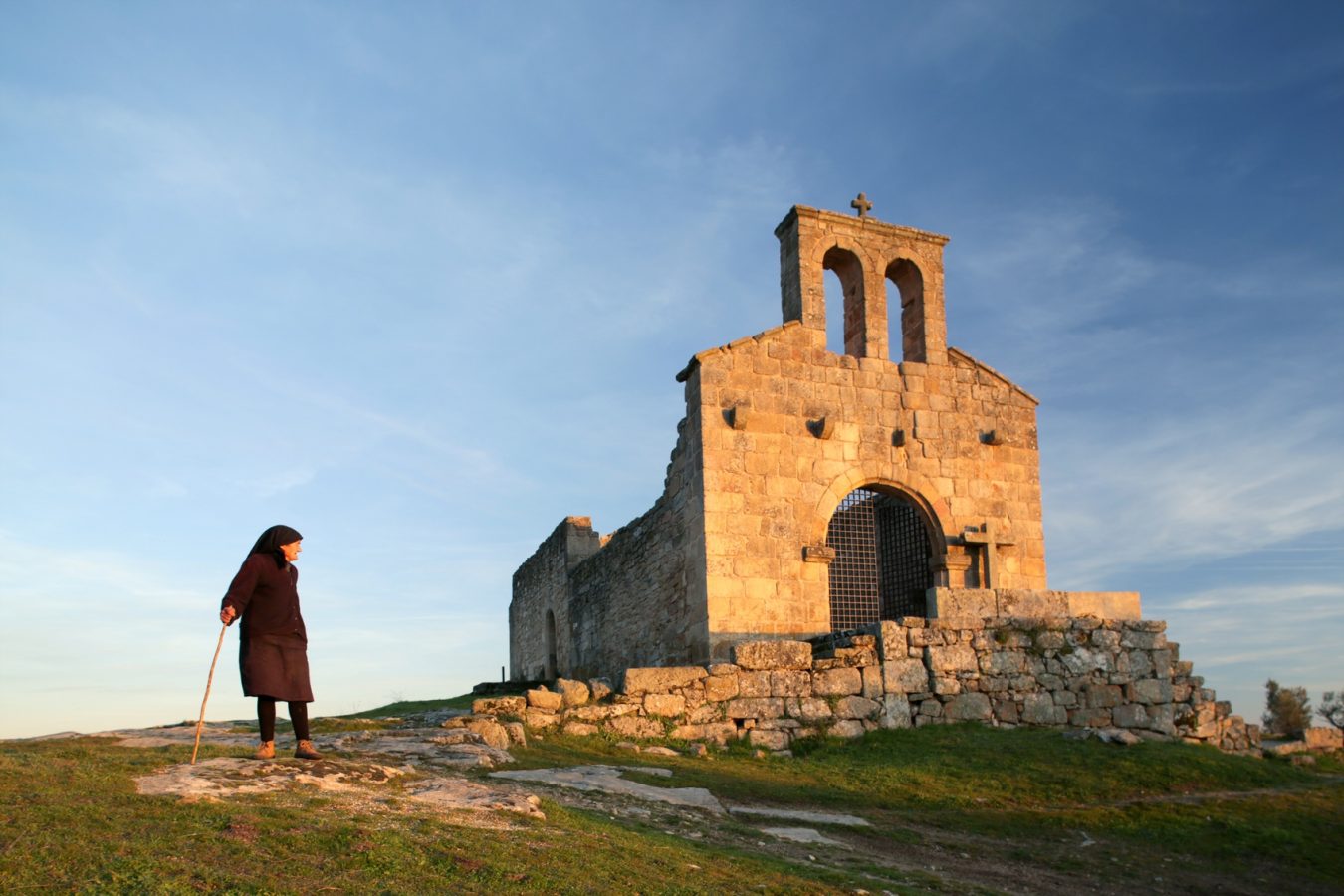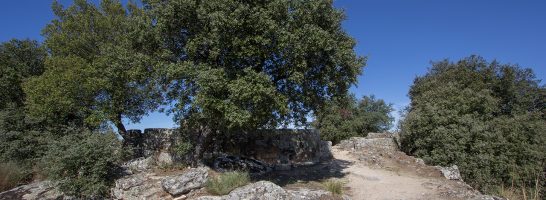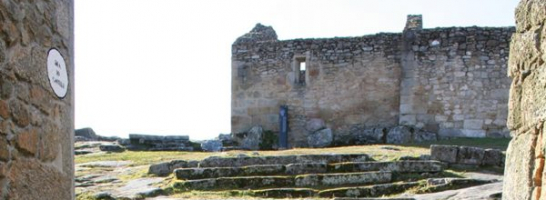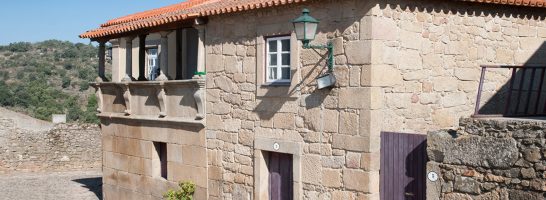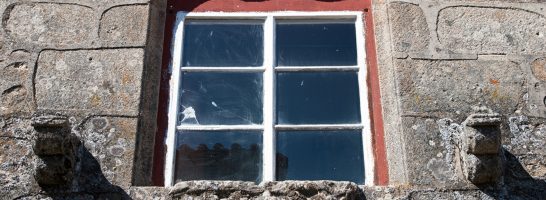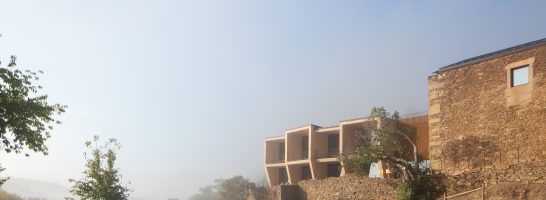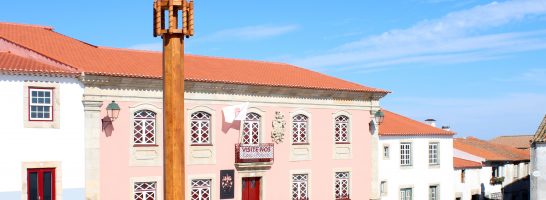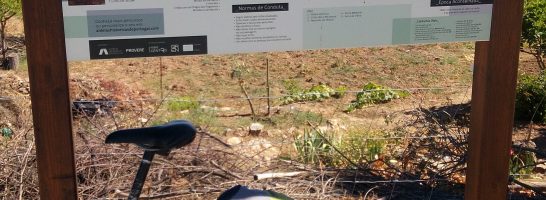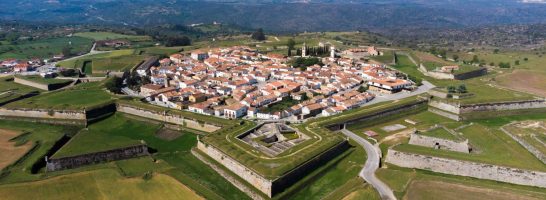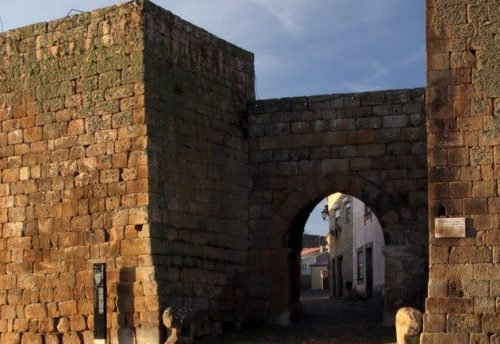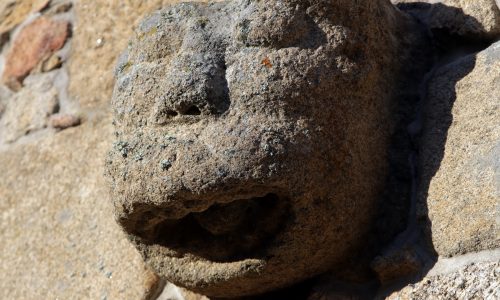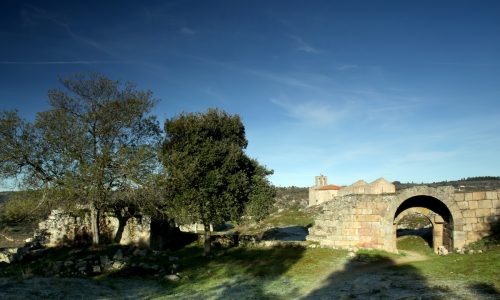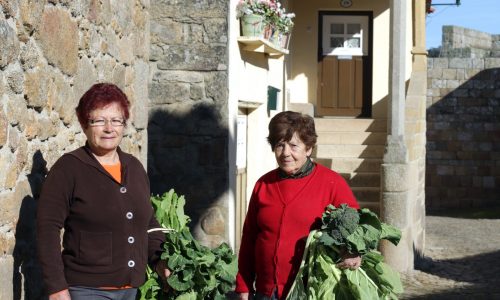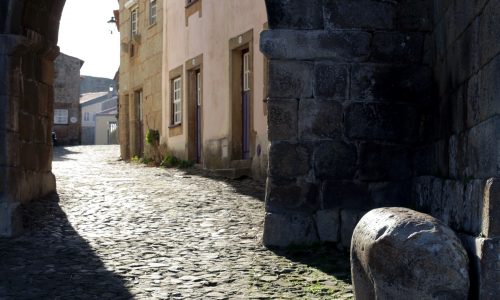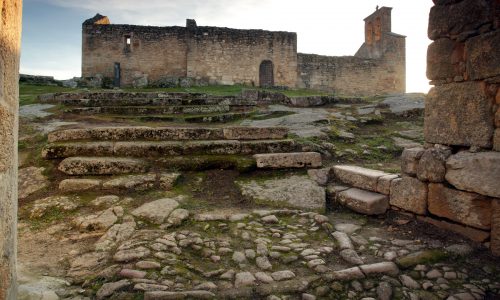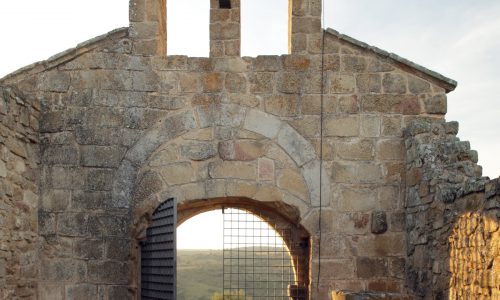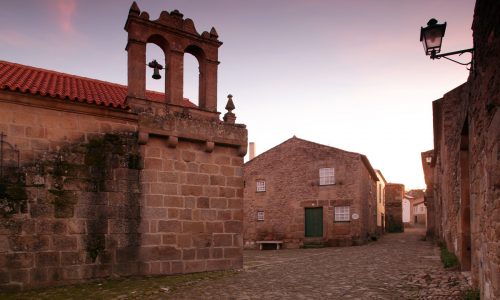Castelo Mendo
An ancient town with a marked medieval character, it is made up of two very distinct centres: the old town, which was originally established, consisting of a castle, a church in ruins, and vestiges of medieval urbanism, all of them surrounded by a 12th century wall; and the new town, or Suburb of S. Pedro, protected by a wall built in the reign of King Dinis, with clear Gothic characteristics, and strongly affected by the earthquake of 1755.
History
Our history your time
The two walled enclosures of Castelo Mendo are of the utmost historical and heritage interest. They testify to the importance given by the Portuguese crown to this town, which was a strategic location against León, at least until the signing of the Alcanizes Treaty on 12th September 1297, as part of the kingdom’s active line of defence, articulated with Sortelha, Vila do Touro and Pinhel. Until then, the border between the kingdoms of León and Portugal was defined by the valley of the Côa River, with Castelo Mendo being located opposite Castelo Bom (Leonese fortress until 1297). It functioned as the guardian of one of the passages of the Côa, known as the São Miguel Gate, a ford with ancestral roots. The origins of this Historical Village are also ancient, as some traces of a possible Iron Age settlement are preserved here, to which the two berrões (or verracos – stone monuments) that protect its main entrance must belong. These two zoomorphic statues represent pigs, or wild boars, and are associated with the Vettones, a people who inhabited this region in pre-Roman times, and who extended their territory as far as Ávila. The function of these sculptures is not clear, but having been a community with a strong pastoral component, they could have been monuments associated with the territorial borders, or, as in other villages in this region, important symbols placed in the access routes to residential centres. Little is known about this ancient settlement and its evolution, although some findings suggest the uninterrupted permanence of a small community from the Iron Age, through the Roman period, and remaining to the Early Middle Ages. But it was at the end of this last period that this community became especially important, as can be attested by the expansion of the walled area, which in a short space of time came to house 3 different parishes. The older wall, with unsigned brickwork, is located at a higher level and integrates the Santa Maria Church. The church, now in ruins, still preserves frescoes in a side chapel and a significant alfarge ceiling, Mudejar work from the 16th century. The castle is located at the southern angle of this first wall, of which the perfect arch door that separated it from the houses is still preserved. To the west, the ruins of the Keep still survive. 16th century drawings by Duarte de Armas, still depicted the Keep with a roof and merlons. Next to it, a cistern collected and conserved rainwater. On this first wall, to the southeast, survives the False Gate, as Duarte de Armas called it. The foundation of this first castle dates back to the end of the 12th century, therefore, before King Sancho II, the monarch who granted the village its first charter. In fact, Castro Menendi is the designation that appears on the seal which authenticates the oldest document referring to Castelo Mendo, dating back to 1202, proof of its very ancient municipal power. The charter granted by King Sancho II, on 15th March 1229, reveals the existence of a castle and a village that developed to the North, around the S. Pedro Church. As a way to encourage settlement, King Sancho II established a weekly market, on Sundays inside the castle, and a fair, held three times a year, lasting eight days, which is one of the oldest medieval fairs in our country. The rapid development of the outskirts meant that, at the beginning of the 14th century, the then town of Castelo Mendo was provided with a second, broader line of walls, functioning as a defence for the houses which had sprung up around the S. Pedro Church. Constructed during the reign of King Dinis, the second wall has several Gothic features: initialled brickwork, the quadrangular turrets of which eight have been preserved, and a great number of doors. The wall built by King Dinis contains four gates. The main one is the Town Gate, protected by two turrets, next is the Guard Gate, through the Sun Gate, which leads to the cobblestone path that descended to Porto de São Miguel and a fourth door, unnamed, boarded up since the 16th century. In that same century, a new church had already been built, that of S. Vicente, next to the Town Gate. On 1st June 1510, King Manuel I granted a new Charter to Castelo Mendo and the town gained a pillory, built next to the S. Vicente Church, a Town Hall and respective prison. During those decades, the population dwindled and the strategic relevance of the town faded, although it maintained its municipal status until 1855. The historical village of Castelo Mendo was classified as a Place of Public Interest in 1984.
What to see
Where sleep
What to do

Adventure and nature trips
We are a registered tour operating company and we base our activity on the values of legal compliance, nature protection and sustainability. We operate according to the Portuguese legislation and we hold a special accreditation from the Institute of Nature Conservation and Forests allowing us to drive inside Nature Parks and other protected areas (where permitted)- We are members of the Natural.pt brand (www.natural.pt), reserved for companies who adhere to the programme. Following the recent pandemic we got our Clean & Safe seal from the Tourism Authority signifying our compliance with the official health requirements for the prevention and control of infections. Our trips are much more than just going from A to B and we distinguish ourselves for having a higher purpose: the knowledge and promotion of the historical, cultural and environmental heritage of Portugal, so that in the end our guests will have lots of stories to tell. In each new journey through some of the most beautiful and remotest places in mainland Portugal, we discover a unique, authentic and truly surprising country with a sense of adventure and discovery that enriches us as human beings. Our offer is based on a personalised service with tailor-made trips meeting the personal interests of our guests. We are constantly exploring and spending countless days on the ground in contact with the local people and organisations in search for the best places of interest and the best routes. As a result of this research, we have acquired a deep knowledge of the whole country which allows us to give our guests a renewed level of novelty and differentiation in each event. During our events we privilege the contact with nature in a legal and responsible manner, with the aim to reduce the impact of our passage, by working with official entities and other environmental organisations. Every year we plant many autoctonous trees in an effort to make Dream Overland a carbon-neutral company, an action that our customers can support and partake in. With our trips we contribute to the social cohesion and economic sustainability of local communities, through the knowledge and promotion of their traditions, handicrafts, produce and local heritage.


